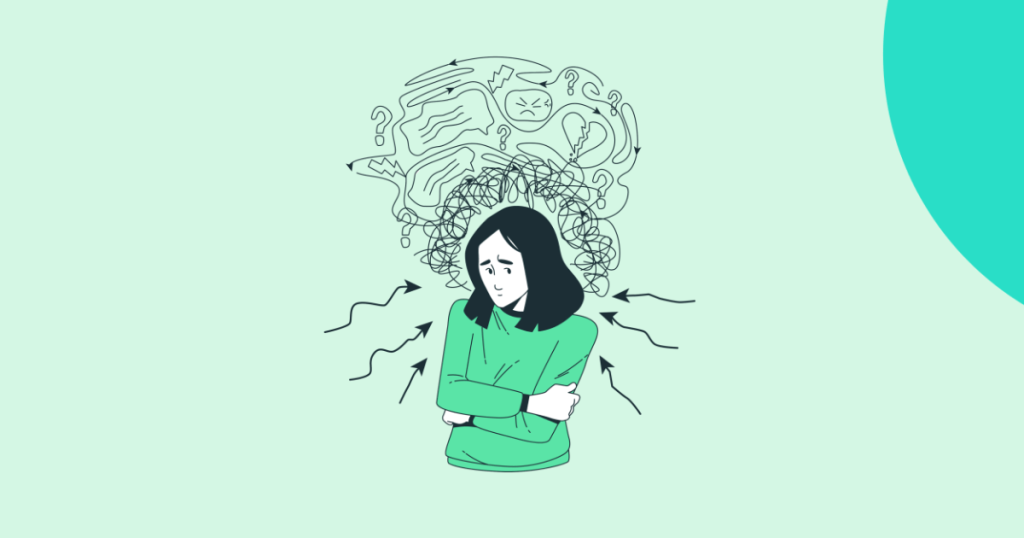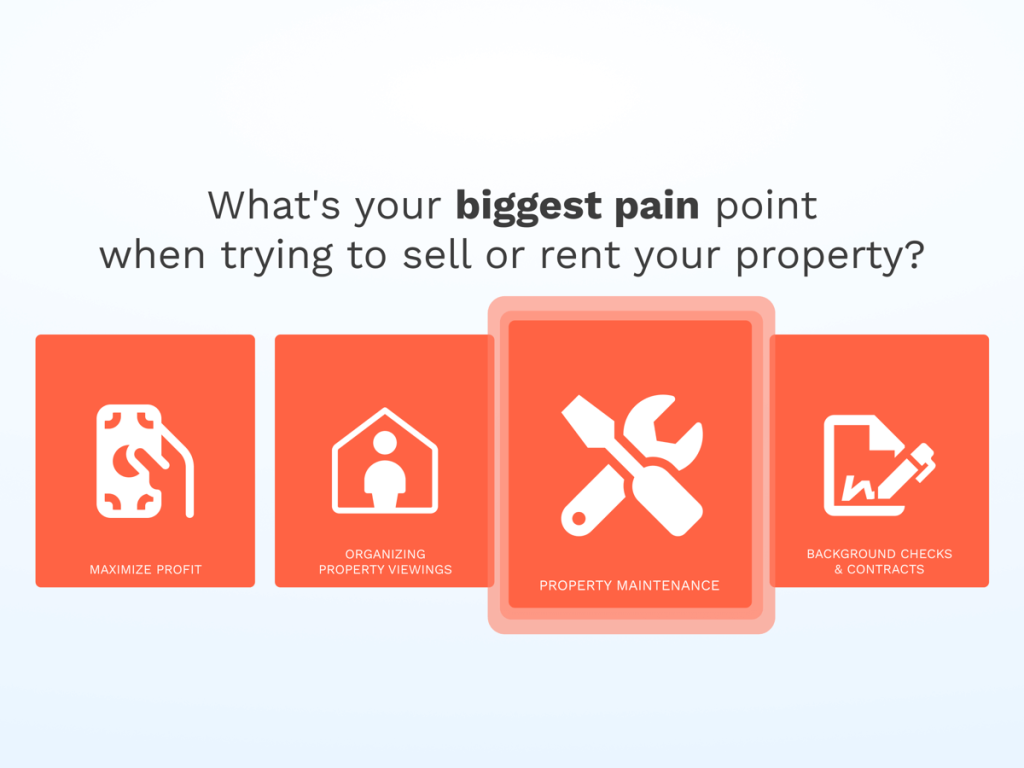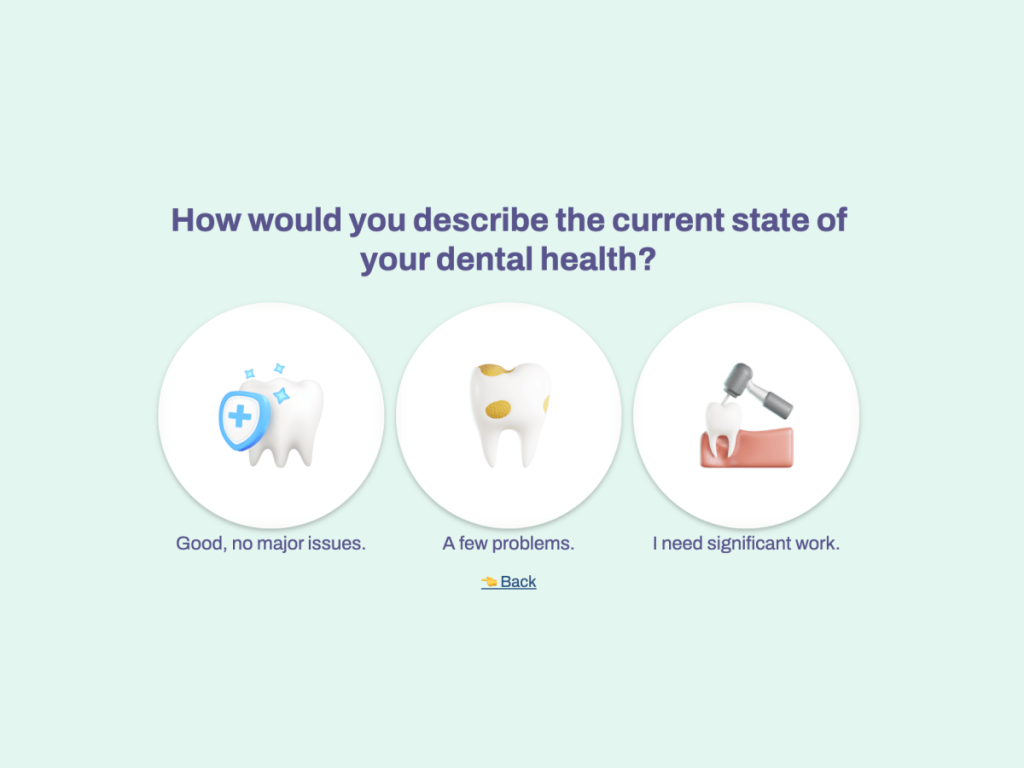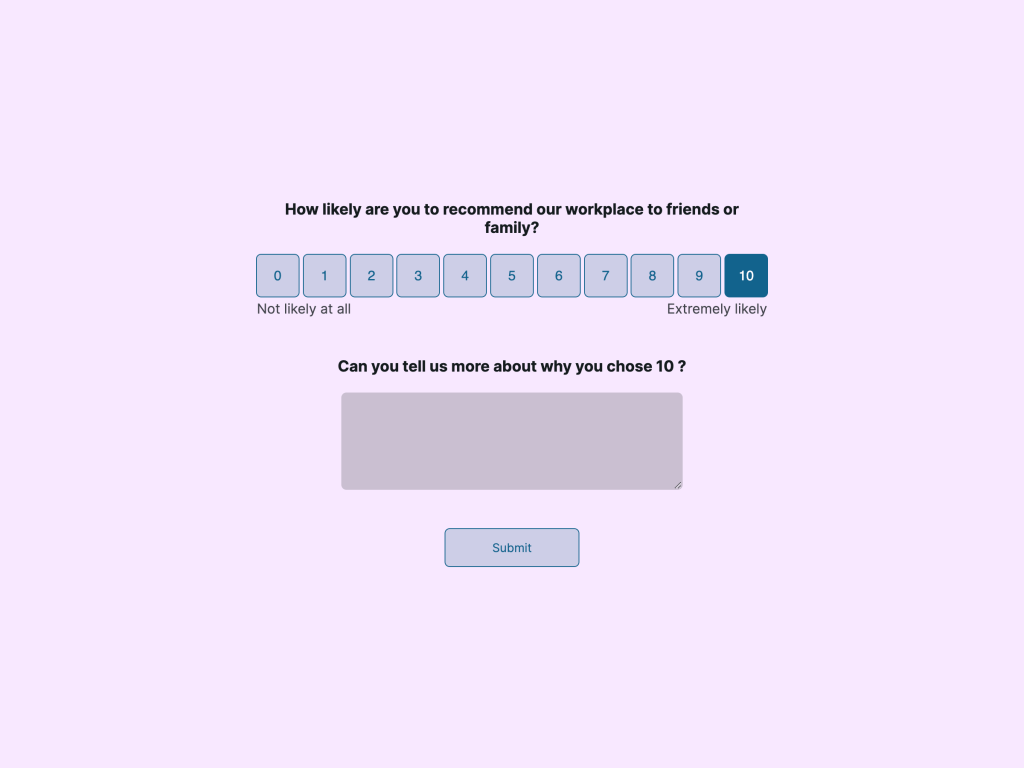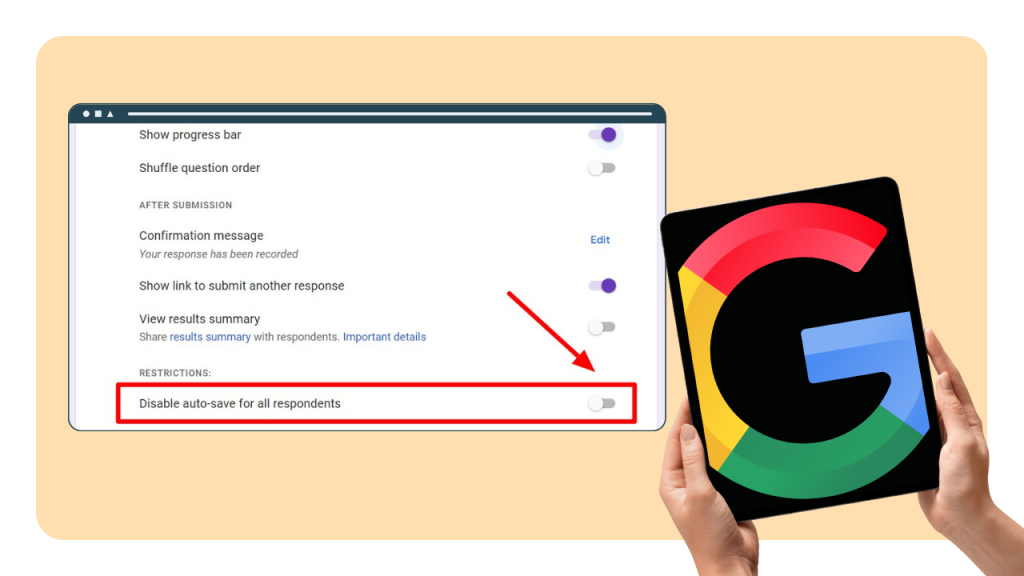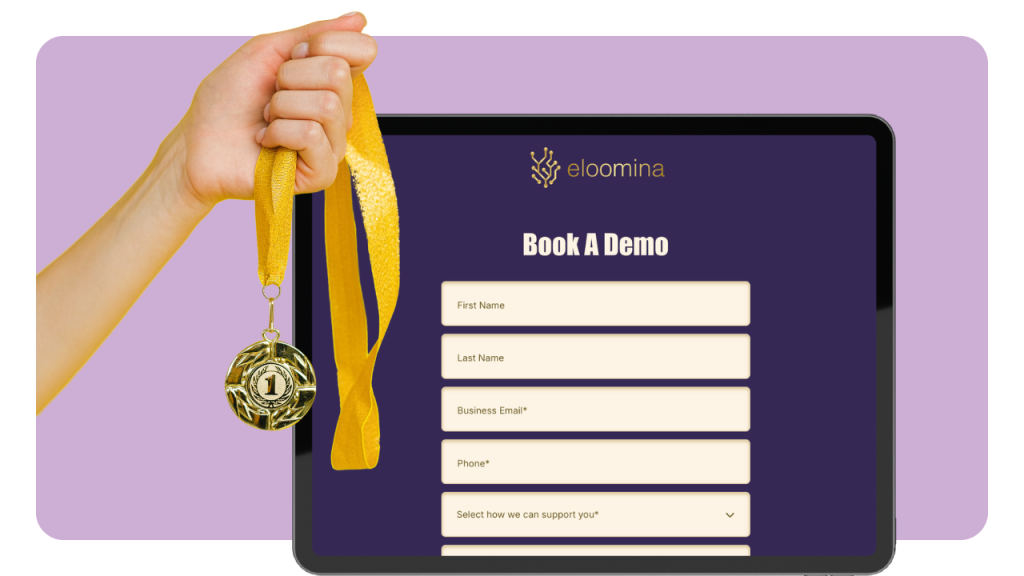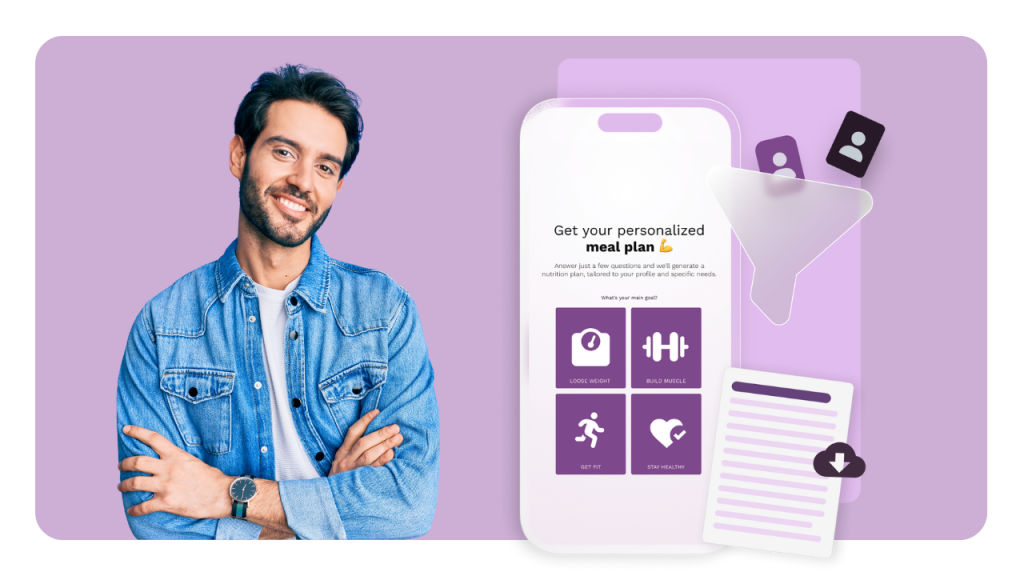Did you know that anxiety disorders affect approximately 301 million people worldwide, which is around 4% of the global population? Anxious customers tend to be more critical of products and services and may also be less loyal. This is because emotions drive purchasing decisions more than rational thinking.
The good news is that anxious customers can actually be an opportunity for companies to improve their processes. If you are looking for ways to better deal with anxious or angry customers, check out our article with 6 best practices you can learn from.
How to Identify an Anxious Customer?
Detecting a customer's anxiety is the first step to establishing a rapport with them and ensuring positive and productive communication.
First, let's see when customers tend to be the most anxious. Usually, anxiety builds when people make purchasing decisions under stress or in circumstances that are far from pleasant and relaxing.
For example, users of medical services are very likely to be anxious because they are stressed about their health condition and should make a choice that will directly influence their well being.
People who turn to businesses for any repairs can also be distressed, as their interaction is because something has been broken or malfunctioning.
Here's how to read the room right and identify customer anxiety:
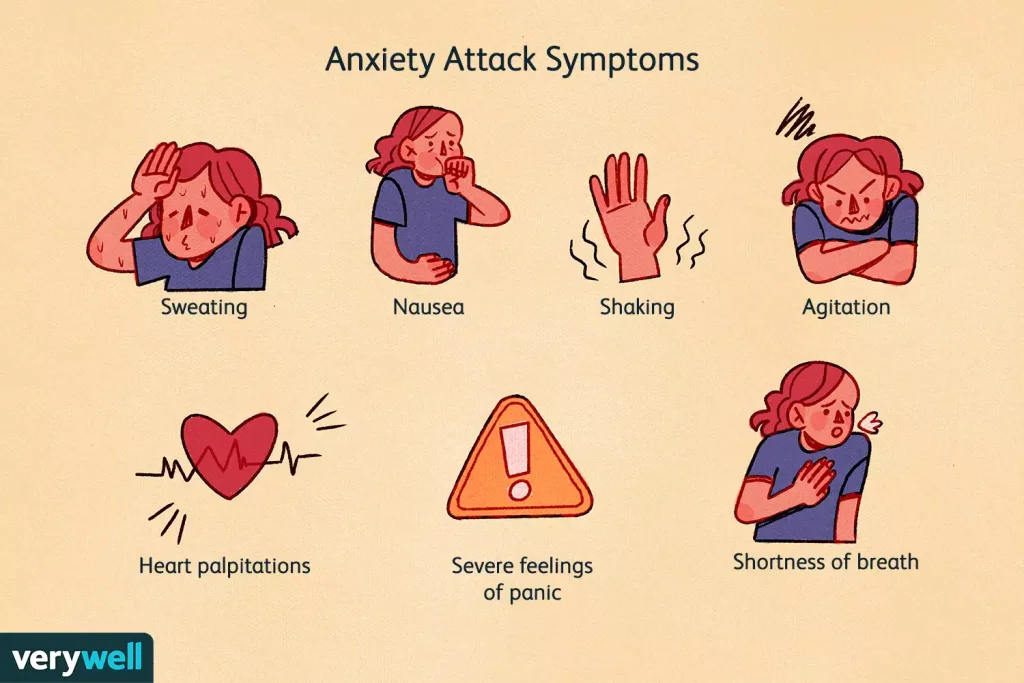
How to Deal with Anxious Customers
Anxious customers tend to have difficulties making decisions. That is why it is extremely important to instill confidence in them and build a trusting relationship. Offer reassurance and alternative options if possible. Let the customer know that you are there to help them and that you will work together to find a solution that meets their needs.
It is not a good idea to refer such customers to self-service resources, even if you are sure they can solve their problems themselves. To build customer confidence, consider putting challenging clients in touch with live support. No AI chatbot can show empathy and deal with irritated customer effectively.
Establishing a genuine human connection with anxious clients can help to alleviate their fears and build trust in your ability to provide them with the support they need. If you have a chance, follow up with the customer after the conversation. This shows that you care about their experience and reinforces the trust that has been built. It also provides an opportunity to address any outstanding concerns and further demonstrate your commitment to resolving the issue.
Our recommendations below can help you build productive customer interactions while reducing anxiety and irritation. Incorporate them into your customer service techniques to build trust in your brand. Dealing with anxious customers can be a challenging task for customer support representatives. However, there are several practical strategies that can help alleviate customer anxiety and build rapport with customers.
1. Stay Calm
Start inspiring confidence with your voice and attitude. Even if the customer has a good reason to be anxious and upset, make them feel that you can help them resolve their doubts and have a satisfying experience.
No matter if you are on the phone or in face-to-face contact with the customer, speak softly but confidently. Use positive body language especially when you don't interact with customers online. Give the customer enough space and pay close attention to what they say.
For instance, you could say: "We understand how frustrating it can be when things don't go as planned, and we want to assure you that we are committed to resolving your issue as quickly as possible. To ensure that we can work together effectively, may I kindly ask that we approach this conversation with mutual respect and understanding? This will help streamline the troubleshooting process and ultimately lead to a faster resolution.."
Staying calm when dealing with anxiety involves not only customer service. You can be under pressure virtually in every industry. Here is one of my favourite TED Talks on the topic.
Generate and Qualify Leads
Start with a template
Speculation Losses Compensation Form Template
Giveaway Template
Dental Insurance Finder Template
Discount Form Template
Financial Planner Calculator Template
Opinion Scale Survey Template
2. Watch Your Language - Keep Positive & Clear
To build a comfortable atmosphere, you need to choose your words wisely.
For instance, negative language can escalate a customer's anxiety. Avoid using phrases such as "Unfortunately," "I can't," or "That's not my problem." Instead, focus on finding solutions and using positive language.
Using absolutes such as "always" or "never" can make the customer feel like they're being dismissed. Instead, focus on finding solutions and avoiding blanket statements. This advice will help you not only at work, but also in your personal life.
A rule of thumb: use simple and clear language to explain the situation to the customer. Avoid using technical terms or jargon that might confuse the customer.
3. Listen Before Offering a Solution
Allow a customer to say everything they want to say. An anxious person wants to voice their concerns and worries and also know they have been heard. So listen carefully and show the customer that you are paying attention.
Remember never to interrupt a customer but prompt them to give more details. Nod or smile to encourage them to ask leading questions.
Even in a live chat, you can practice listening techniques. Wait until your customer has provided all the details before suggesting possible solutions.
In any case, even if you already know how to help a customer, wait until they say everything they want to say. If you suggest a solution before they give all the details they consider relevant, the customer may think the solution could be more optimal.
3. Express Empathy, Not Sympathy
Empathy is putting yourself in the other person's shoes and letting them know that you felt the way they feel now. Sympathy, in its turn, means showing that you understand how they feel and feel sorry for them. While the difference may seem subtle, such nuances can matter a lot in establishing productive communication.
By being empathic, you can build a closer connection with the customer than by being sympathetic. Empathy puts you on the same level as your vis-à-vis and helps to establish trust.
A striking example is the one from Notion – a project management company. After the COVID-19 pandemic hit, they shared a heartfelt release note (as well as sent the same email) to show customers they were in the same boat working fully from home. Plus, the team behind Notion informed clients about the recent features and updates to make it more convenient for remote workers.
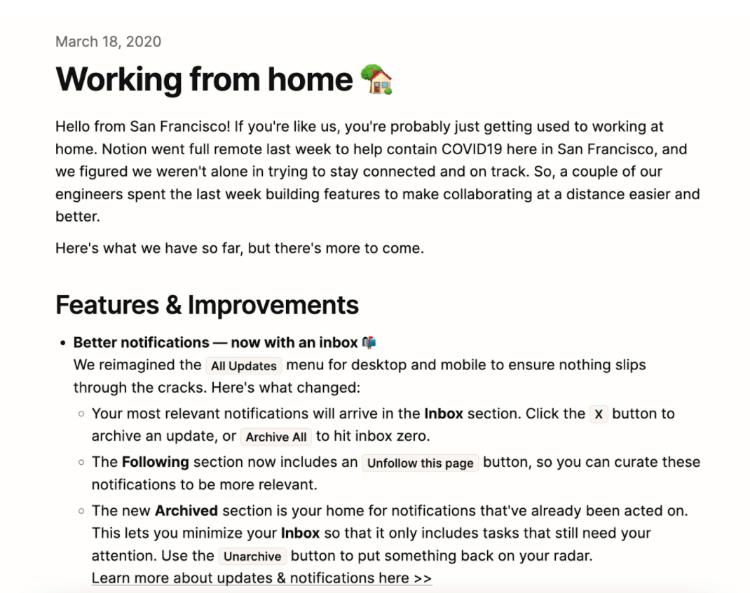
4. Deliver on Your Promise
No matter how much you might want to satisfy an anxious customer, never overpromise. Generally, this principle is one of the pillars of good customer support, not only when it comes to dealing with anxious customers.
Failing to fulfil a promise can be more harmful than the initial anxiety the customer experiences. If a customer's demands are rejected, they will become even more dissatisfied and may leave negative public reviews. This could lead to even more problems for your brand.
Let me show you what happens when a brand doesn't live up to its promise. Here is the example of Nick, who made his purchase on Casafina – an online retailer of kitchenware, tableware, and gifts.
They said, "new sales go live at 7 am and last for 72 hours," but Nick didn't receive his parcel when promised and, sure thing, complained. The company's answer was not-so-nice – instead of taking responsibility; they played the blame game:
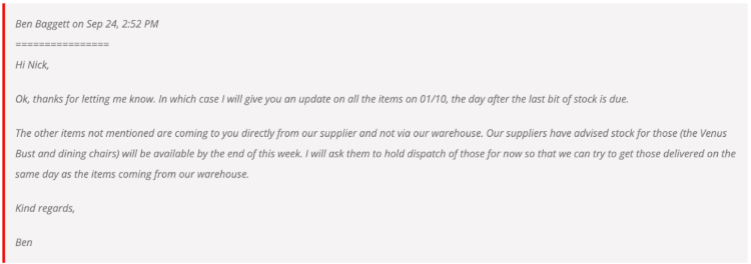
The lesson: every business should be as transparent as possible with a customer and not choose the blame route...
5. Invest in Emotional Intelligence Training
Emotional intelligence is the ability to recognize and understand other people's emotions. With this skill, your customer support team can be more attentive and emphatic when dealing with anxious or angry customers. As a result, their interactions are more likely to result in a better customer satisfaction rating.
Special training sessions could help your team learn how to:
Be better tuned to other people's emotions
Recognize the indicators of anxiety and stress
Control their own emotions
Respond to other people in a way that brings communication to a calm and constructive track
There is a huge range of training courses on the market. Choose the course that fits your schedule and budget, and check that it covers the topics you need to improve your customer service.
For example, the Udemy platform offers a Great Customer Service with Emotional Intelligence course that you might find helpful:
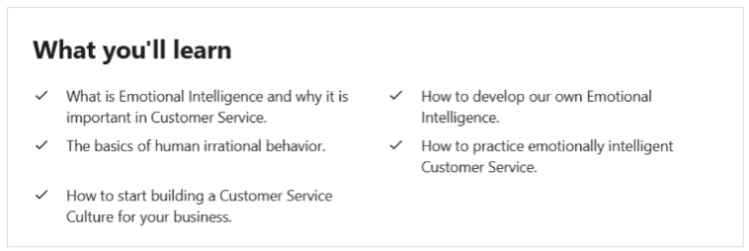
6. Use Automation Smartly
Consider a ticketing system or a bot that will initially screen customer requests. This way, each request will be routed to a corresponding subject-matter expert, who can resolve the problem.
Have you ever booked a flight and felt anxious because of seat reservation/luggage registration issues/travel insurance/ or other glitches? I bet you wished for a quick problem solution.
Let's analyze the example of Norwegian Airlines and its way of incorporating automation to achieve ultimate results (and save both their and customers' nerves). The company leveraged an AI-fueled chatbot from Kindly, which helped them:
Reduce live chat inquiries by 20%
Assist international audiences, thanks to multilingual capabilities
Unburden the support team and automatically have the chatbot answer 1 out of 5 queries in Norwegian
The key is to connect the customer with an agent within the shortest time possible. A long hold time or ineffective communication with a bot can build up the person's stress, which is exactly what you should avoid. But when anxious person sees that their issue is in the hands of a professional, they become more relaxed and confident.
To Conclude: a Good Business Helps Its Customers Through Good and Bad
Dealing with anxious customers can be a challenging task for customer support representatives. However, there are several practical strategies that can help alleviate customer anxiety and build rapport with customers.
It would've been great if we only had happy customers who come to express their joy and gratitude. In reality, though, customers are more likely to come with problems than with thanks. It is up to you to make them feel understood and supported at times of stress and anxiety.
Your customers will definitely remember how you managed to help them and the brilliant solution you found. Such memories can stay longer than memories of a smooth experience, so make sure you do all you can to offer empathy and support when customers need them the most.
Generate and Qualify Leads
Start with a template
Can you afford mortgage? Template
Customer Profiling Survey for Ecommerce Template
Financial Planner Calculator Template
Computer Skills Assessment Template
Energy Assessment Quiz Template
Cold Sales Email Script AI Generator Template
